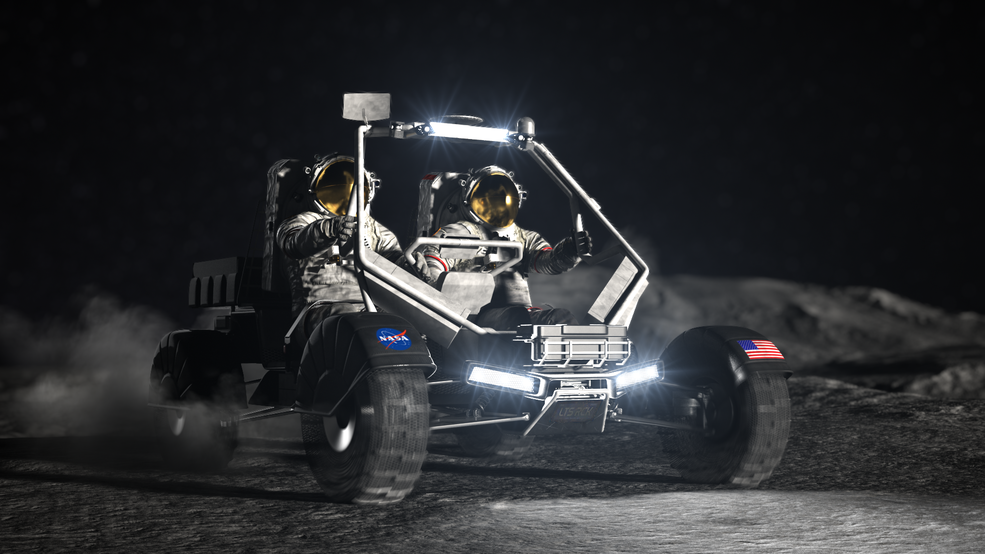NASA seeks industry proposals for next-gen lunar rover to traverse Moon

- Country:
- United States
NASA said Friday it is seeking industry proposals for a next-generation Lunar Terrain Vehicle (LTV), which will enable astronauts to traverse the challenging south polar region of the Moon, conducting extensive scientific research and exploration like never before during Artemis missions.
The Artemis program aims to land the first woman and the next man on the lunar surface by 2024, with subsequent missions focusing on establishing a sustainable human presence on the Moon. As part of this ambitious endeavour, NASA recognizes the need for an advanced lunar rover that Artemis astronauts will drive to explore and sample more of the lunar surface than they could on foot.
Rather than owning the rover, NASA has decided to contract it as a service from industry partners. This approach will allow the agency to leverage the innovation and expertise of commercial companies, ensuring the best possible outcome while providing the highest value to U.S. taxpayers.
According to NASA, the LTV will blend the functionalities of an Apollo-style lunar rover and a Mars-style uncrewed rover. It will serve as both a crewed and uncrewed mobile science exploration platform, allowing for continuous scientific investigations even when the crew is not present.
The vehicle will be operated remotely for transporting cargo, scientific payloads, and resources between crewed landing sites, enhancing scientific research opportunities and enabling resource prospecting on the Moon.
Further, the lunar South Pole includes permanently shadowed areas and prolonged periods without sunlight. To address these challenges, the rover will need to incorporate advanced systems such as state-of-the-art power management, semi-autonomous driving capabilities, robust communication and navigation systems, and protection against the extreme lunar environment.
We need a new lunar rover for the @NASAArtemis missions!@NASA announced it is seeking industry proposals for a next-generation Lunar Terrain Vehicle that will allow @NASA_Astronauts to traverse the lunar surface for scientific discovery and exploration. https://t.co/tQArAvMGHl
— NASA's Johnson Space Center (@NASA_Johnson) May 26, 2023
As part of the Lunar Terrain Vehicle Services request for proposals, companies are required to offer end-to-end services, including the development, delivery, and execution of LTV operations on the lunar surface. Each rover must have the capacity to accommodate two suited astronauts, support a robotic arm or mechanism for scientific exploration, and withstand the extreme temperatures found at the lunar South Pole.
Prior to crewed operations, the selected company will need to successfully demonstrate the LTV's capabilities in the lunar environment.
NASA plans to integrate the LTV into crewed operations starting with the Artemis V mission, which is scheduled for 2029. However, before being used for crewed missions, the rover will be deployed for uncrewed and commercial activities upon landing on the lunar surface.
Interested companies have until July 10, 2023, to submit their proposals for the LTV services contract. The contract award is expected to be announced in November 2023.










